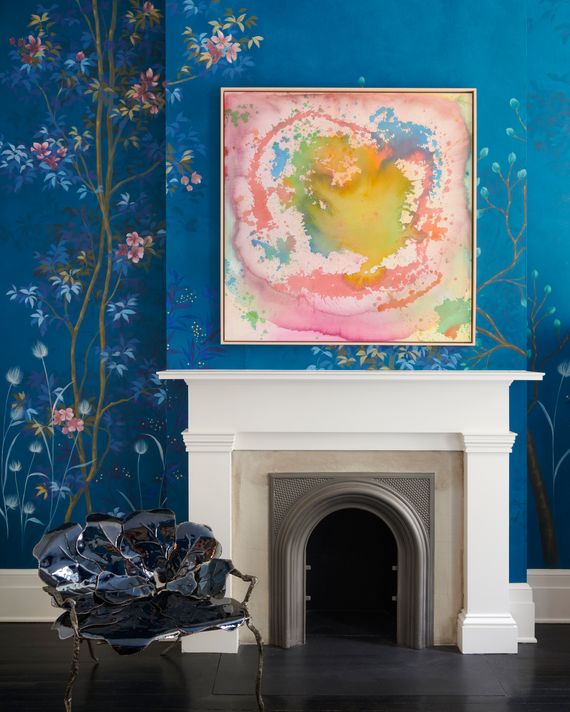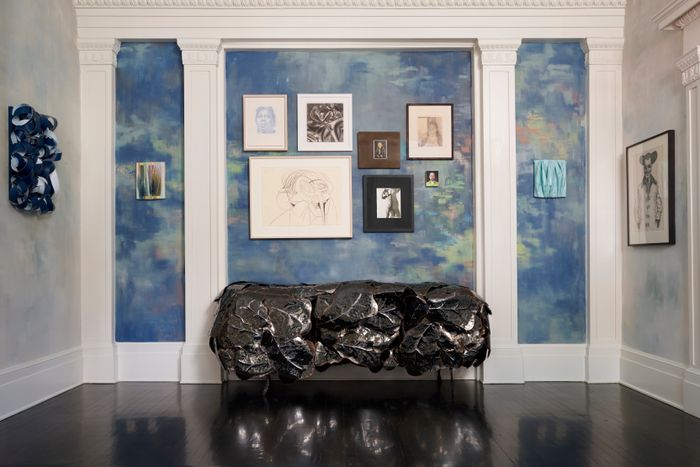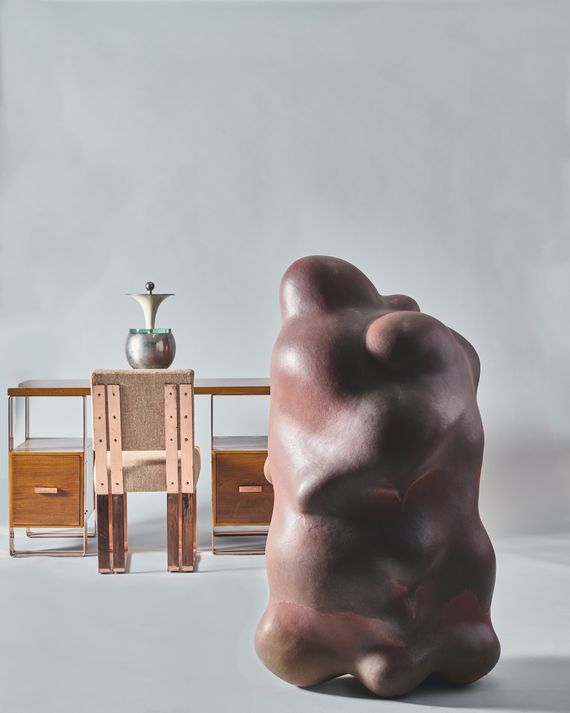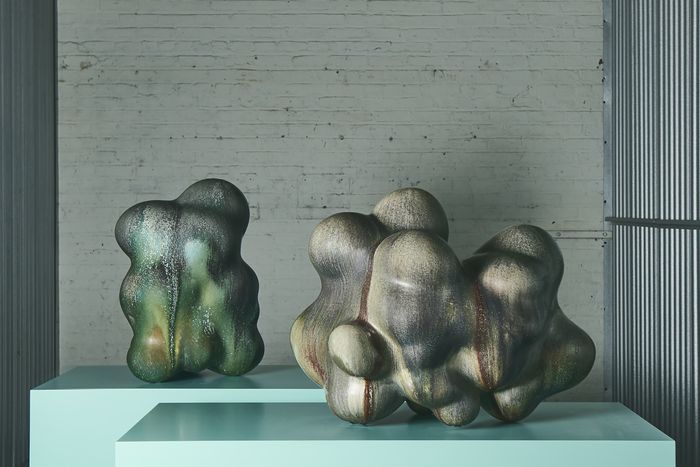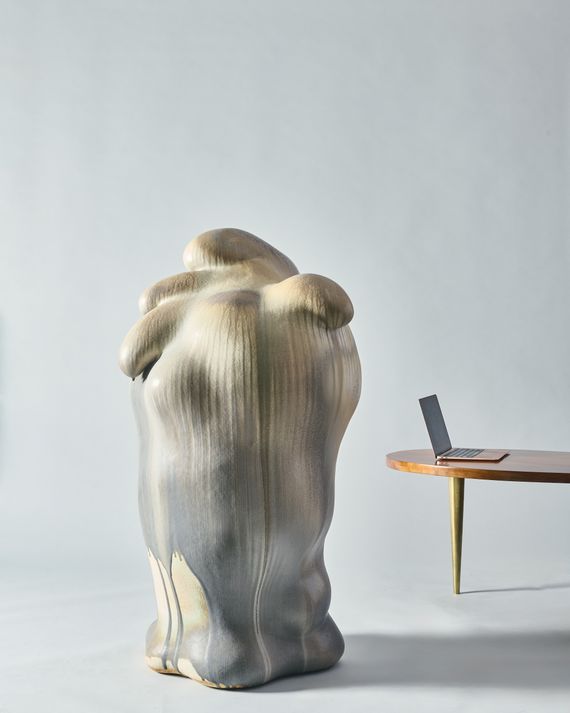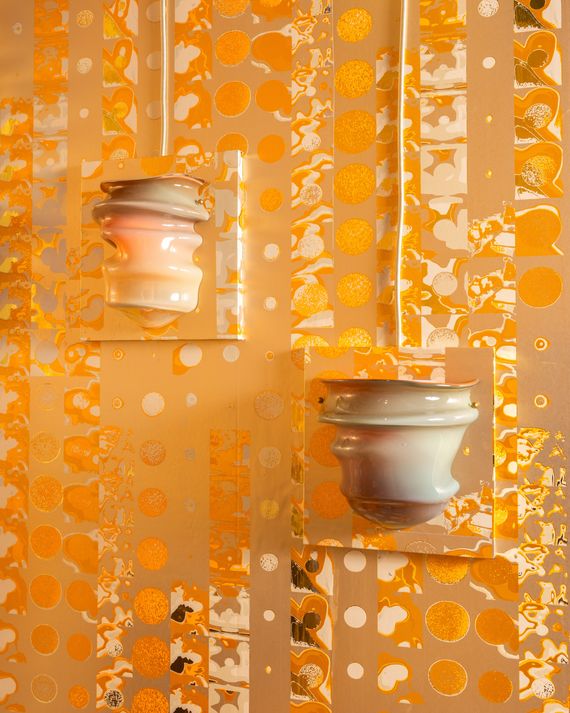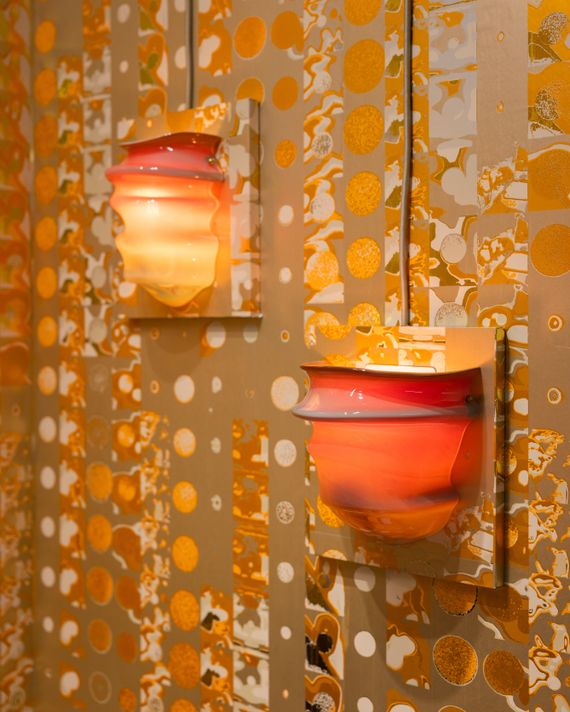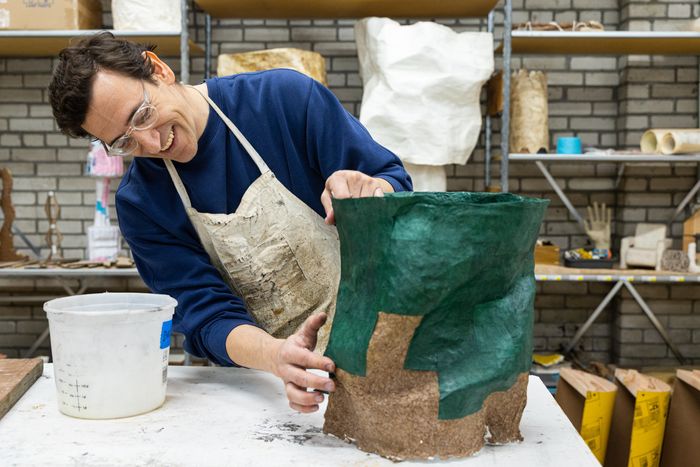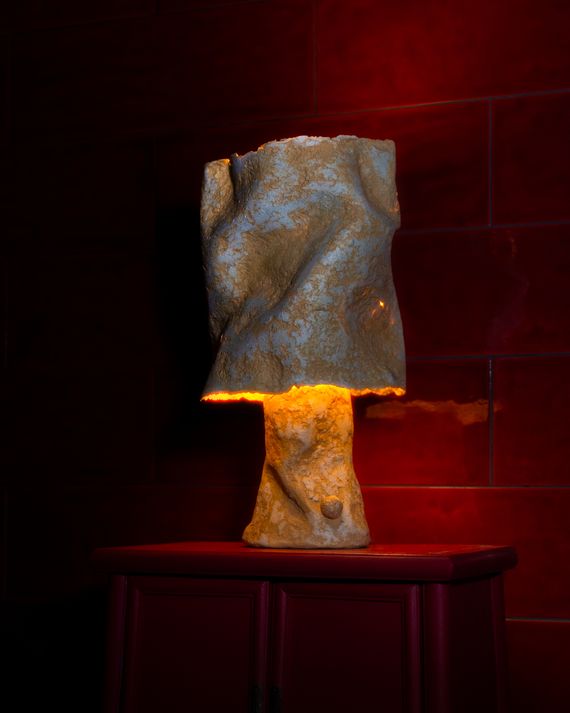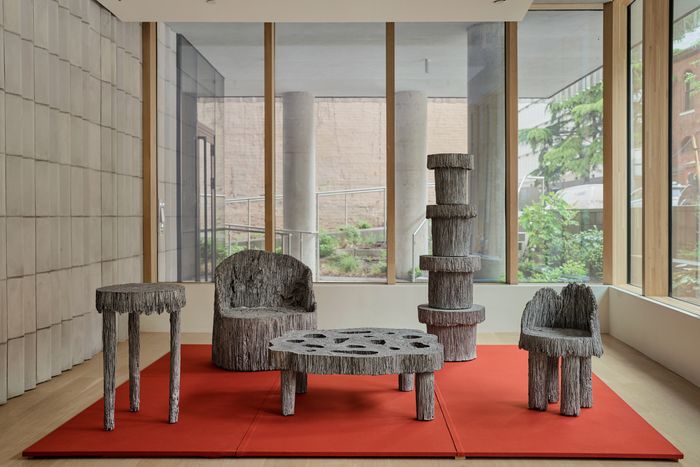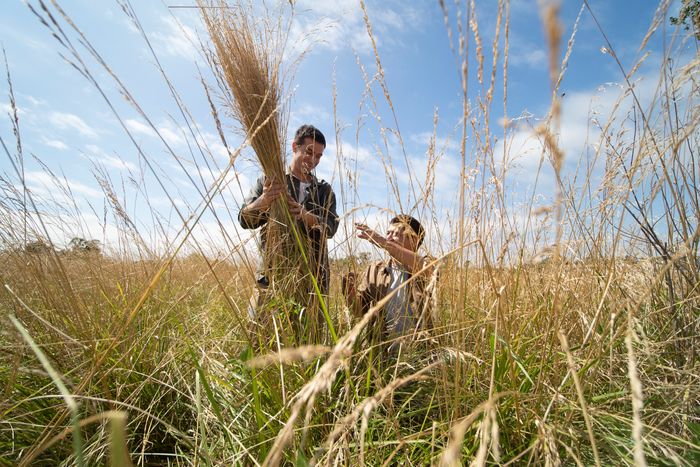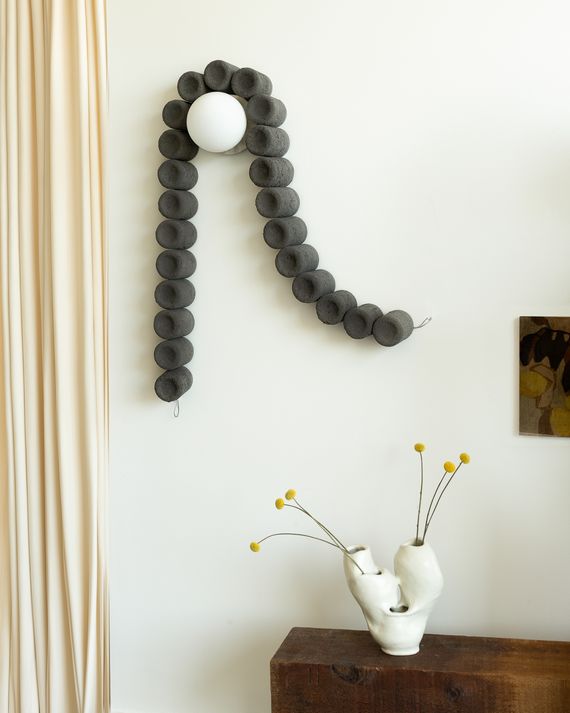Photo-Illustration: Curbed; Photos: Michael Mundy, Adam Whyte, Black & Steil,
During New York design week, there’s an unofficial category of furniture that could be grouped under the question: Can I touch this? There’s the stuff you like, and then there’s the stuff you can’t help but be drawn to, often because the designer is pushing their craft to the limits of what’s possible. The following are a few of the works that disarmed and surprised us.
Black Throne 1 (2025)
Photo: Black & Steil
The Black Narcissus Cabinet (2022)
Photo: Black & Steil
The Australian designer Michael Gittings began his career working with copper to fashion the material into musical instruments. But they all “sounded horrific,” he admitted, and he switched to making furniture, much of it out of stainless steel. Several years ago, he tried a new technique, mirror-polishing industrial sheets normally used in building applications and subjecting them to a hot salt bath connected to an electric current, which oxidized the metal. This process lets him apply a black, blue, or bronze patina to the sheets, which he used to create a cabinet that looks more like a geological artifact, along with lamps and candelabras that mimic flowers and insects. This year he tried the technique on an armchair, which looks oddly comfortable, if still formidable. That piece, along with the credenza from 2022, are now on view at Amanda Pratt’s new Villa AM gallery in the West Village until the end of the summer.
Spirit Series #2317 by Chris Gustin
Photo: Michael Mundy
Spirit Series #2309 (left) and Cloud Series #2312 (right) by Gustin.
Photo: Michael Mundy
Spirit Series #2403
Photo: Michael Mundy
At Donzella this May, the ceramicist Chris Gustin debuted a new collection — the Spirit Series — which blew up the scale of his previous undulating pieces. The bulbous forms came from a technique he began using about a decade ago, when he started building with an ovoid cross-section of clay rather than the classic wheel-thrown circle. For Gustin, that change opened up how he saw the works, giving them distinct fronts and backs and “personalities,” which led to his Cloud series, a collection that was his first foray into more abstract sculpture than functional vessel. The works in his Spirit Series look even more vaguely human, with some pieces rising as tall as the artist himself. But they’re not precious; with their closed forms, these works can live outdoors. On view at Donzella through June 27.
The sconces when the light is turned off.
Photo: Adam Whyte
The lights turned on.
Photo: Adam Whyte
Glass designer Grace Whiteside has been working with what they call “deflated” forms for a while through their company Sticky Glass. They use heat and gravity to fold handblown glass into rippled waves. But the sconces that they showed at this year’s new trade fair, Shelter by Afternoon Light, were something new, partly because of their experimentation with layered colors. When they are not turned on, the sconces appear to be a muted metallic gray, but when illuminated, they reveal a vibrant red-orange gradient — the layer of color that’s only applied to the inside. “It’s like we are looking at the grotesque beauty of the organs inside of us,” says Whiteside. The lights will be part of a show at Gotham NY’s Chelsea store opening June 5.
Pulp Table Lamp: Handmade paper, muslin, cornstarch, lighting assembly
Photo: Travis Lemire
The paper lamps that Providence-based designer Samuel Aguirre debuted at the Wanted hub in ICFF look like they’ve been lifted from a forest sprite’s home. Since he’s designed them to be compostable, it’s not that far-fetched. Aguirre, who recently graduated from the furniture design department at RISD, has experimented mostly with paper because of these qualities. He makes the paper himself out of plant fibers like mulberry bush, cotton, and hemp, experimenting with the ratio of fiber to starchy binders to test how the paper comes out. Aguirre then air-dries the lamps, which “settle” into their final shape. The designer previously released a gridded chair, also made out of paper, that seems to test the limits of what people think paper can do; with this collection, he seems to have fully embraced its malleable, earthy nature.
Photo: Rue Sakayama
Photo: Travis Lemire
Photo: Ben DeHaan
At 9 Chapel, a narrow, wavy condo tower designed by SO-IL, a monochromatic assemblage of furniture and wall pieces took over the ground floor as part of a show curated by Verso, a New York design gallery. The collection, which includes tables, stools, and chairs, looks like a fossilized version of the concrete facade around it. In fact, it’s the result of a yearslong research project by RIES, a Buenos Aires–based studio. The designers at RISE wanted to experiment with the ubiquitous but often overlooked native grasses of Argentina’s Pampas region. To create the forms, they dried and assembled the grass to create lost molds, which are buried in a soil and sand mixture that dissolve as molten aluminum is poured over them. The resulting works create a permanent version of the fragile grasses, and in the process they have created something that feels ancient and a little otherworldly.
Gathering the grasses.
Photo: Ben DeHaan

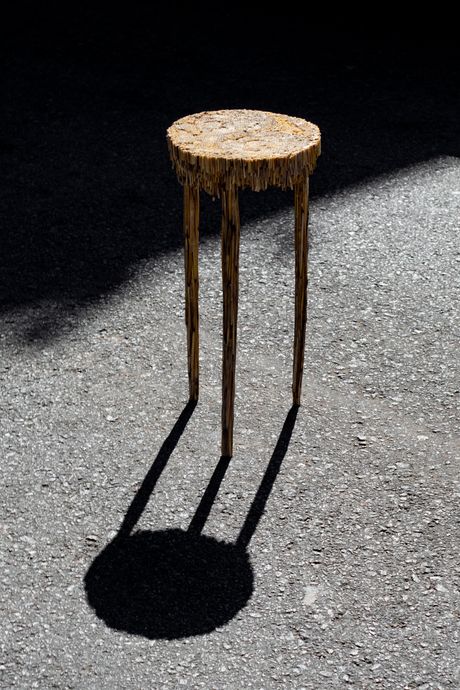
From left: The molds made out of the grasses before molten aluminum is poured over their buried forms. Photo: Ben DeHaanPhoto: Ben DeHaan
From top: The molds made out of the grasses before molten aluminum is poured over their buried forms. Photo: Ben DeHaanPhoto: Ben DeHaan
Detail of a table.
Photo: Felix Niikado
For the two Indian designers who make up Soft-Geometry, a shared Sunday afternoon ritual of their family members oiling, braiding, and caring for each other’s hair led to their latest work, Long-Haired Sconces. To create them, Utharaaa L Zacharias and Palaash Chaudhary experimented with a material new to them, hemp. They found its lightweight, ecological qualities appealing, and they combined it with lime and pressed it into molds to create something that would form a small-scale unit. After drying these forms for weeks, the designers painted them with a thin layer of lime wash that leaves the texture of the hemp still visible. The sconces that they created are flexible and modular, resulting in “braids” of hemp modules that can be placed in any number of arrangements on the wall. Like some of the other works shared here, the designers have a bodily reference for the works, which they call “portraits.”
Photo: Jonathan Hokklo
See All


